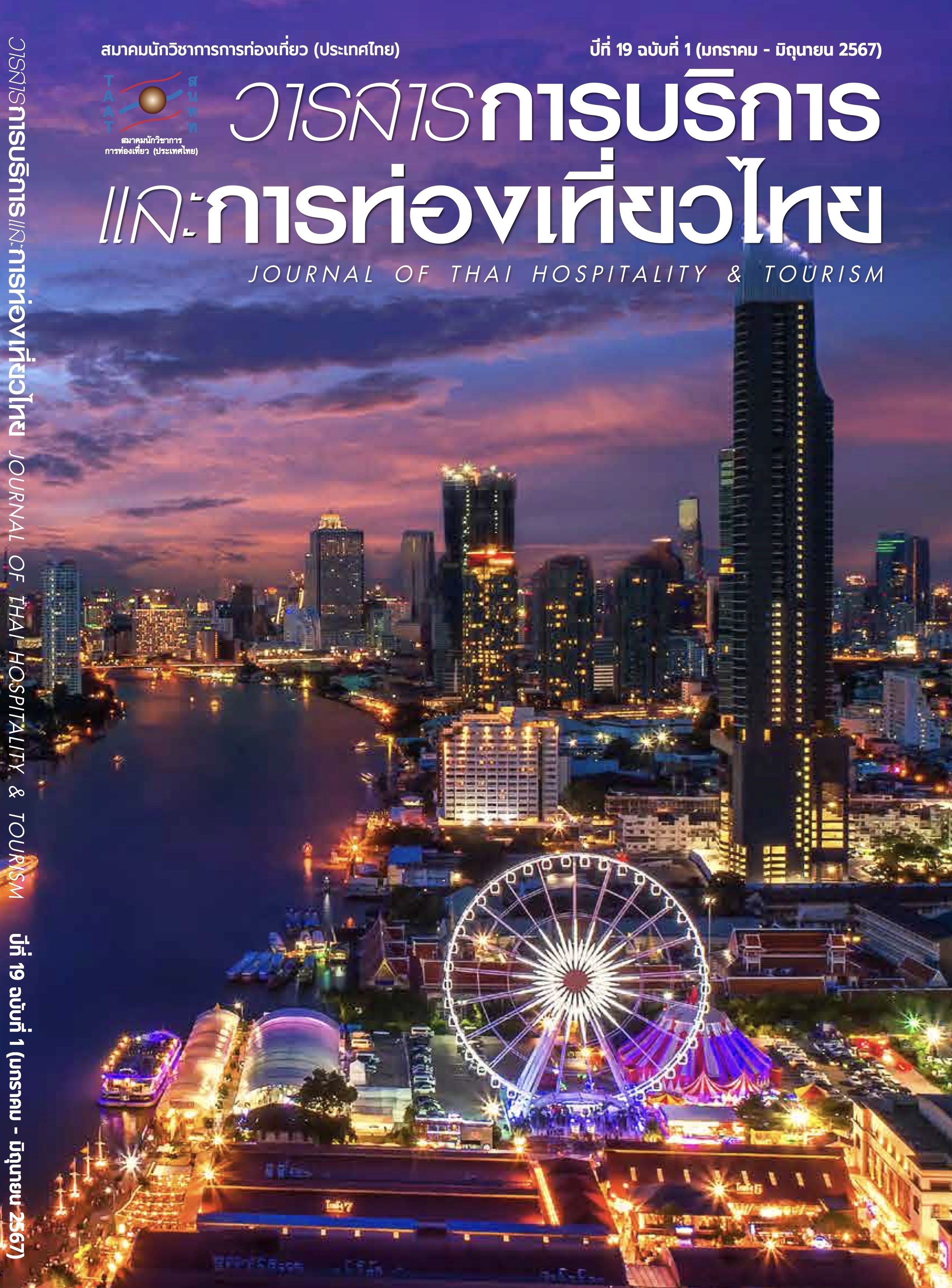Personal Factors and Tourism Behavior Affecting Tourists' Domestic Travel Intentions after the Coronavirus Disease 2019 among Tourists in Bangkok
Main Article Content
Abstract
The research objectives were to study domestic travel intentions and factors affecting travel intentions after the coronavirus disease 2019 outbreak among tourists in Bangkok. The research sample consisted of 400 tourists in Bangkok. The research tool was a questionnaire. The data was analyzed using frequency, percentage, mean, and standard deviation statistics, as well as the t-test and F-test.
The results found that:
- Domestic travel intentions after the outbreak of the coronavirus disease in 2019 found that the overall sample has a high level of domestic travel intentions (
= 4.26). Considering each item, it was found that the tourists selected domestic tourist destinations as their next travel destination (
= 4.36), followed by the intention to travel to the country soon (
= 4.28), and those who planned to travel to the country after this (
=4.22).
- The gender identity of the tourists did not affect their domestic travel intentions. Meanwhile, the age range of tourists had a statistically significant effect on domestic travel intentions at .05 level. There are five differences between the pairs, which are (1-2) under 20 years old, different from 40–49 years old and 50–59 years old; (3-4) 20–29 years old, different from 40–49 years old and 50–59 years old; and (5) the age range of 30–39 years is different from 50–59 years.
- Factors in tourism behavior in terms of travel style did not affect domestic travel intentions. Meanwhile, the tourism travel targets had a statistically significant effect on domestic travel intentions at .05 level. There are 4 different pairs: the business tourism aspect is different from meeting friends or relatives; tourism for meetings and exhibitions; educational trips; and leisure travel are different from traveling to meet friends or relatives.
Article Details

This work is licensed under a Creative Commons Attribution-NonCommercial-NoDerivatives 4.0 International License.
References
Hair, J. F., Black, W. C., Babin, B. J. & Anderson, R. E. (2010). Multivariate Data Analysis. Pearson.
Jan–Iem, R. (2021). The Future of Travel Changes, the Future of Travel Business with New Experiences. DIProm Journal, 63(November – December), 5–7.
Krungthai Compass. (2021). Penetrating Travel Behavior in the New Normal: When Covid Change Lives. https://bit.ly/3cDhMIO
Makhdoomi, U. M. & Baba, M. M. (2019). Destination Image and Travel Intention of Travellers to Jammu and Kashmir – the Mediating Effect of Risk Perception. Journal of Hospitality Application and Research, 14(1), 35–56.
Ministry of Tourism and Sports (MOTS). (2020a). Expenditure Project for Surveying the Attitudes and Satisfaction of Thai and Foreign Tourists Traveling in Thailand. MOTS.
Ministry of Tourism and Sports (MOTS). (2020b). COVID–19 and Its Impact on Thai Tourism: Thailand Tourism Situation Q1/2020. https://www.mots.go.th/download/TourismEconomicReport/4-1TourismEconomicVol4.pdf
Nitiprapa, N. (2021). Analysis of the Situation of MSME in the Field of Tourism Business in 2021 and Trends in 2022. https://www.sme.go.th/upload/mod_download/download-20211012232619.pdf
Phueakbuakhao, S. & Phueakbuakhao, W. (2021). Guidelines for the Development of Health Tourism for the Elderly in Muang District, Phachuap Khiri Khan Province. Academic Journal of Phetchaburi Rajabhat University, 11(2), 4–10.
Saenkam, B. (2021). The Behavior of Thai Tourism after COVID 10 Situation. Journal of Liberal Arts and Service Industry, 4(1), 160–167.
Sriwilai, S. & Thongsri, R. (2021). The Effects of the Spread of COVID-19 Pandemic on Thai Tourism. Journal of Legal Entity Management and Local Innovation, 7(8), 405–416.
Tourism Council of Thailand (TCT). (2021). Confidence Index of Tourism Business Operators in Thailand 1/2564. TCT.
Worrachananun, M. & Srisuksai, N. (2021). The Effect of COVID–19 Outbreaks to the Destination Choice and the Intention to Visit the Destination among Thai Tourists. In Promoting Creative Tourism: Current Issues in Tourism Research. Routledge.


